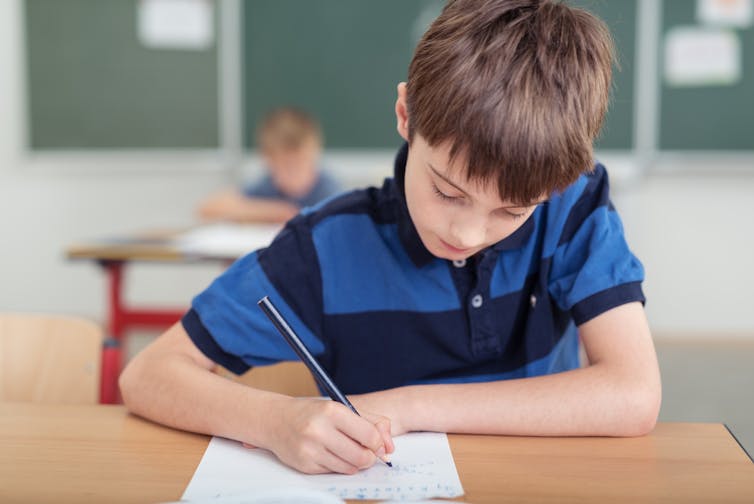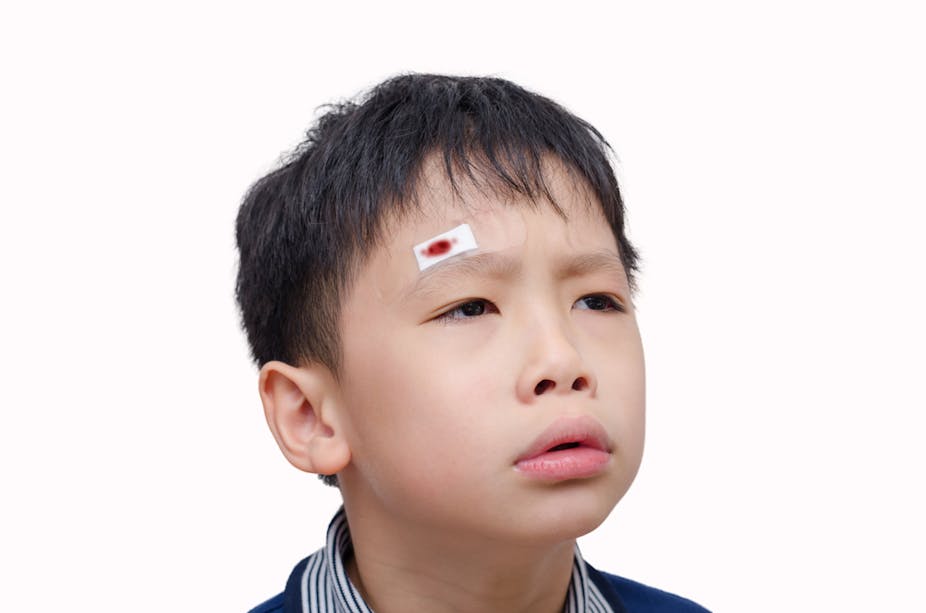Head trauma is a major public health concern in the United States, with indirect and direct health-care costs approaching nearly US$1 billion annually. Worse, head trauma also can cause short- and long-term health problems and, in children, problems with academics, headaches and behavioral health issues.
One challenge has been determining just how widespread concussions are among children. A study published in May, 2016 found that only 80 percent of concussions were treated by a pediatrician or other primary care provider. This limits accurate surveillance and data collection, but it also means that tens of thousands of children, and maybe more, are not getting treatment.
Another study published last June gives an even more distressing number. That study estimated that between 1.1 million and 1.9 million concussions occur in children each year. That is far greater than the number of children with concussions reported by emergency departments; their records indicates the number ranges between 115,000 to 167,000.
More than half – about 53 percent – do not occur during school sports settings, yet a significant number do. With 44 million children playing sports each year, it is important that we collect better data – and make sure all children are receiving the care they need. While some high-profile athletes have tried and touted oxygen chambers to treat concussions, there is questionable evidence that these work. The treatment for most concussions is usually rest. Sometimes, doctors may prescribe a shortened school day.
Treatment for a first, protection from a second
In the past few years, awareness has grown about the long-term effects of trauma to the head, particularly repeated hits such as those that occur when playing professional contact sports. As more study has revealed the danger of head trauma, it is important that children, parents and coaches know the signs of concussions and how they can occur. Most important, however, is to know when to seek treatment.
While rare, the effects of an untreated concussions can stay with a child for many years. The effects can cause brain malfunction, including a lack of focus and difficulty learning. Also, the risk for longer-term problems increases if a child has a second concussion. It is also important to determine whether a child has suffered a concussion so that a second concussion can be prevented. Recovery is longer for a second concussion. Thus, it is imperative to avoid sending a child back into a game or activity if head trauma has occurred.
Just what is head trauma, and what causes it?
Head trauma is a type of traumatic brain injury (TBI) that is caused by a hit to the head causing the brain and head to be jostled rapidly, disrupting its normal function. A concussion also can result from a strong hit to the body that inadvertently jostles the head and brain.
While TBI among professional football players brought the issue of concussions to the forefront, it is important to know that head trauma doesn’t just happen when children play football. Concussions can happen from a fall or from an assault, such as when kids get into a fight or are even attacked. Of all the head traumas reported in children younger than 18 years, about half are assault-related head trauma.
About 0.7 percent of the U.S. population visits the Emergency Department each year from head trauma (which encompasses, concussions, TBI, as well as minor head injuries) and about 15 percent of these visits result in hospitalizations.
Of all these visits, nearly a quarter of them are for children 11 and younger, and 35 percent of the visits are for newborns to 17. Nearly a third of reported head traumas are sports-related, with football-related injuries accounting for nearly two-thirds of all sports-related head traumas in children.
Regardless of the cause, head trauma is a major public health concern in children. Untreated concussions can lead to cognitive impairment, headaches, dizziness and sense of “not being oneself.”
There’s help for the heads

There is good news among the disturbing news. About 90 percent of concussions are transient, with symptoms resolving within seven days. However, a minority of patients remain symptomatic several months post-injury, a condition known as post-concussion syndrome.
The Centers for Disease Control has developed a helpful program for kids, parents and coaches called “Heads-Up.” This provides a list of signs for parents to look for in case a child has been hit. The agency also provides a list of symptoms reported by the child. Because diagnosis depends in large part upon self-reported symptoms, it is important that children be informed of signs and symptoms. While some serious concussions may result in a collection of blood that forms on the brain after a hit, there is no reliable test for a concussion. According to the Centers for Diseases Control, a parent should call 911 or take the child to the emergency department if a child has one or more of these signs:
- One pupil larger than the other
- Drowsiness or inability to wake up
- A headache that gets worse and does not go away
- Slurred speech, weakness, numbness or decreased coordination
- Repeated vomiting or nausea, convulsions, or seizures (shaking or twitching)
- Unusual behavior, increased confusion, restlessness or agitation
- Loss of consciousness (passed out / knocked out).
According to the Centers for Disease Control, children and teens who return to school after a concussion may need to take rest breaks as needed, spend fewer hours at school, be given more time to take tests or complete assignments, receive help with schoolwork, and reduce the time spent reading, writing or on the computer.

